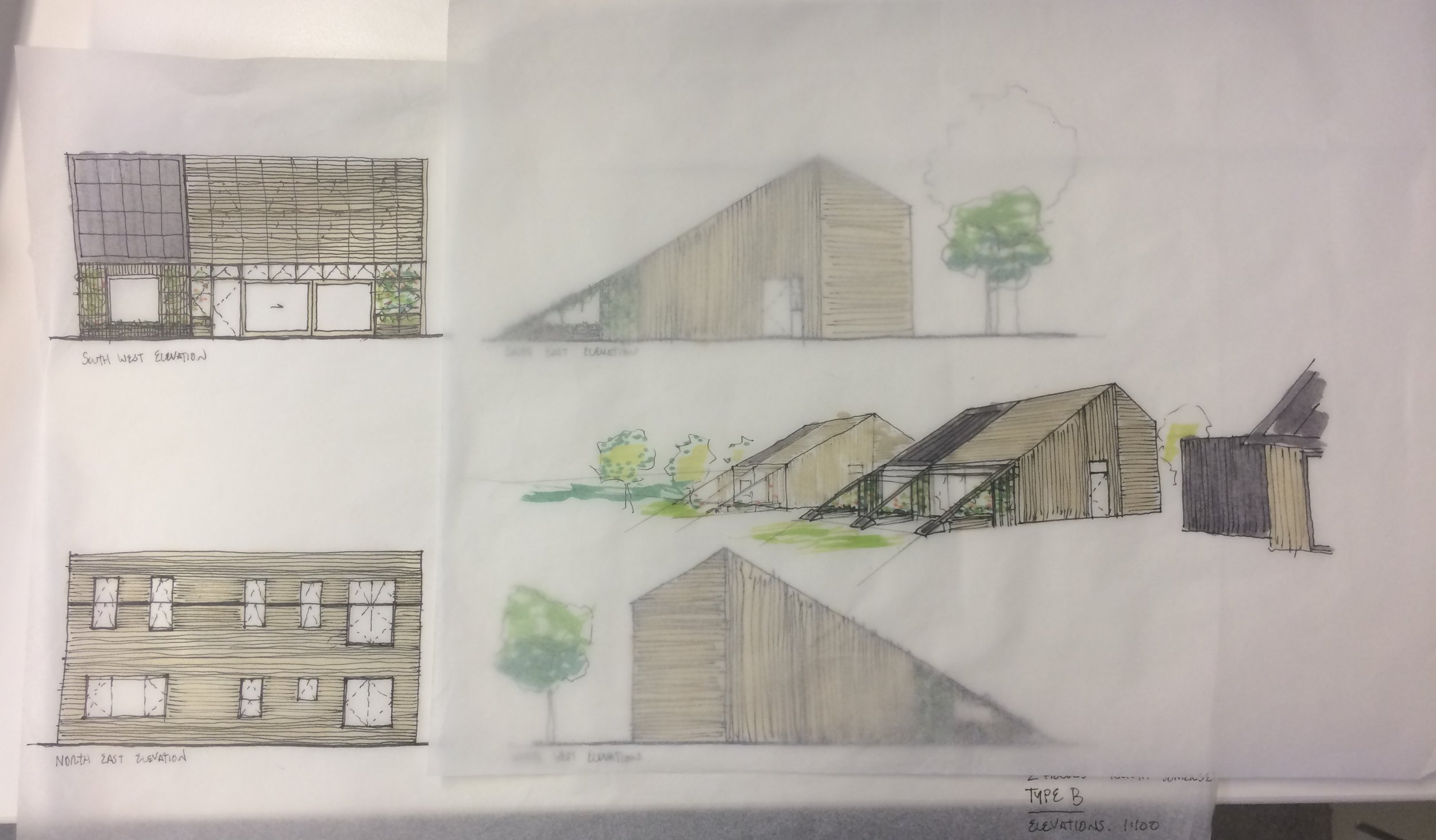We recently achieved planning permission for two lovely eco-homes in the countryside in North Somerset, near Backwell. The approval was a departure from local policy as the site is outside of settlement boundaries, and the following post has been written to explain how we achieved consent in such a circumstance.
On the site, there is currently a large warehouse. This was within the Storage and Distribution use class, B8. A Permitted Development Right was in place that allowed conversion of up to 500m2 of warehouse space to residential, which is use class C3. This fell under the General Permitted Development Order, specifically 'Part P'.
Existing site plan
Part P rights must be recognised by a ‘Prior Approval’ notice, which is the result of a small application. The purpose of this notice is to allow Local Authorities to be informed of the potential development and confirm that it is indeed eligible for such development.
Having undertaken the above process, we had notice from North Somerset Council that they recognise the National right for us to turn the 430m2 warehouse into 2 separate houses 215m2 each.
After some considered discussions with our clients who own the building, Solarsense, and their property agents Knight Frank, it was agreed that whilst this was a great idea in principle, demand wasn’t as high for converted warehouse in the country as it is in Bristol and London. The existing warehouse was also poorly arranged on the site. Fortunately there was a grander plan.
After considerable design, consultation and discussion, we prepared an alternative proposal. The principle was the same, two houses, same site, same access but the old asbestos-roofed warehouse with its really low eaves, poor solar orientation and proximity way too close to the neighbours to be demolished, the excessive disused hardstanding torn up and two new houses constructed elsewhere on the site.
Concept sketches of the proposed homes
The new eco-homes would have similar floor areas but on much smaller footprints (lots more space for gardens, insects, the birds and the bees and for water to soak into the ground), would face the sun (warm winter low energy houses and renewable solar power energy). They would enjoy views out to the surrounding countryside and a more appropriate spacing between buildings, including the neighbours.
This was a good proposal, good for the client, good for the neighbours, good for the character of the local area and good for the environment.
Proposed site plan
Our case was made stronger by Ben Larcombe at CSJ Planning Consultants, who clarified:
. The LPA are constrained by Case Law, namely Snowden V Secretary of State for the Environment [1980] to consider the fall-back position as a material consideration in decision making. It is the applicant’s contention that the new-build scheme hereby proposed provides a significant improvement upon a scheme that could be lawfully implemented using the established permitted development right.
I.e. the alternative proposal must not only be considered in the context of local policy, but also comparatively with the potential development allowable by the national Permitted Development Right, and recognised by the Prior Approval notice.
With a simple and clear yet thorough application, the client and design team were confident of a positive outcome, though as the Permitted Development Right was due to expire on April this year we needed determination before this date, as success was entirely dependent on the existence of the ‘Part P’ Permitted Development Right. Whilst we had submitted the application with 7 months before the expiration, the response by the Local Authority took 6 months (the statutory period is 2 months).
Shortly after receiving permission, the Government announced that ‘Part P’ is to be extended for another year until April 2019, so if you have a development potential, now is the time to get in touch, feel free!
View from the south east
View from the south west





